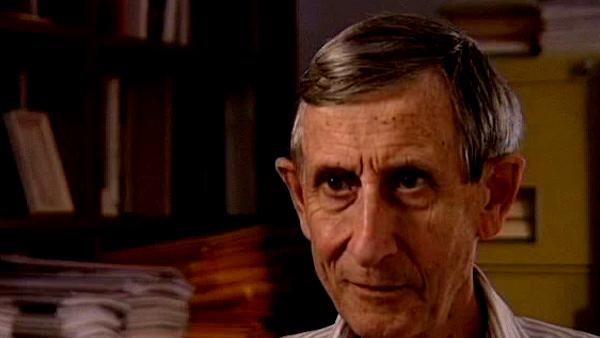NEXT STORY

The Feynman diagrams
RELATED STORIES

NEXT STORY

The Feynman diagrams
RELATED STORIES


|
Views | Duration | |
|---|---|---|---|
| 71. Talking physics with Feynman: path integrals | 1 | 3759 | 02:55 |
| 72. The Feynman diagrams | 1 | 3569 | 02:36 |
| 73. How difficult was it to understand Schwinger? | 1 | 4824 | 04:55 |
| 74. George Uhlenbeck and David Park at Ann Arbor | 1770 | 01:18 | |
| 75. Travels: Berkeley, Martin Luther King, Salt Lake City | 1604 | 01:50 | |
| 76. Linking the ideas of Feynman, Schwinger and Tomanaga | 2836 | 06:47 | |
| 77. Meeting Feynman with Cécile DeWitt-Morette - the proof... | 3225 | 02:19 | |
| 78. Trying to convince Oppenheimer that the old physics works | 2 | 2675 | 03:43 |
| 79. The seminar series: convincing Oppenheimer | 2470 | 03:54 | |
| 80. The S-matrix paper that made me famous | 2568 | 02:53 |


And he talked about physics, of course, a great deal and there I argued with him a lot because I still had strong resistance to his way of doing things.
[Q] His way of doing things now being path integrals....
Yes. I said to him, 'Look, you've got to get the mathematics right otherwise it doesn't make any sense. You've got to have some solid foundation in mathematics. It's all right to draw the pictures but...'
[Q] Could I interrupt you?
Yes.
[Q] I mean, could you... when were you introduced to path integrals and his way of thinking about quantum mechanics? Maybe you could say a few words about that.
Well he talked a great deal about integrals, but he didn't really use them. You see, there were two aspects to Feynman - I mean the way of doing physics. There was the path integral which gave him sort of the fundamental view of the physical world - before there were propagators this is. The path integral doesn't have propagators, the path integral simply says that you sum all the histories, that the world just does everything it can, there are no laws, there are no rules. You start out with the world in a certain state and then it does everything it can, it can move in all sorts of directions, all the particles can jiggle around as much as they want in all possible ways, and then at the end then there's a certain probability amplitude for finding a particular state in the future, and you find the probability amplitude for that future outcome by simply adding together all the paths. That's it - that's the recipe. And that makes sense, and so each path contributes an amplitude which is just got by integrating the Lagrangian over the volume, and that was his recipe. But he never really used that, but it gave him the physical basis. And then out of that he concocted these working rules which were sort of a crude approximation to the path integral, in which you simply gave each particle a straight line trajectory - instead of having a real path integral you just got a schematic approximation to it by having a straight line track for each particle, and then joining the tracks together at vertices where they interacted, and then you had propagators telling you how the particles got from one place to another. So in order to get the probability amplitude then you just added up the propagators. And that was sort of a crude version of a path integral, but it wasn't the same thing.
Freeman Dyson (1923-2020), who was born in England, moved to Cornell University after graduating from Cambridge University with a BA in Mathematics. He subsequently became a professor and worked on nuclear reactors, solid state physics, ferromagnetism, astrophysics and biology. He published several books and, among other honours, was awarded the Heineman Prize and the Royal Society's Hughes Medal.
Title: Talking physics with Feynman: path integrals
Listeners: Sam Schweber
Silvan Sam Schweber is the Koret Professor of the History of Ideas and Professor of Physics at Brandeis University, and a Faculty Associate in the Department of the History of Science at Harvard University. He is the author of a history of the development of quantum electro mechanics, "QED and the men who made it", and has recently completed a biography of Hans Bethe and the history of nuclear weapons development, "In the Shadow of the Bomb: Oppenheimer, Bethe, and the Moral Responsibility of the Scientist" (Princeton University Press, 2000).
Tags: Richard Feynman
Duration: 2 minutes, 56 seconds
Date story recorded: June 1998
Date story went live: 24 January 2008